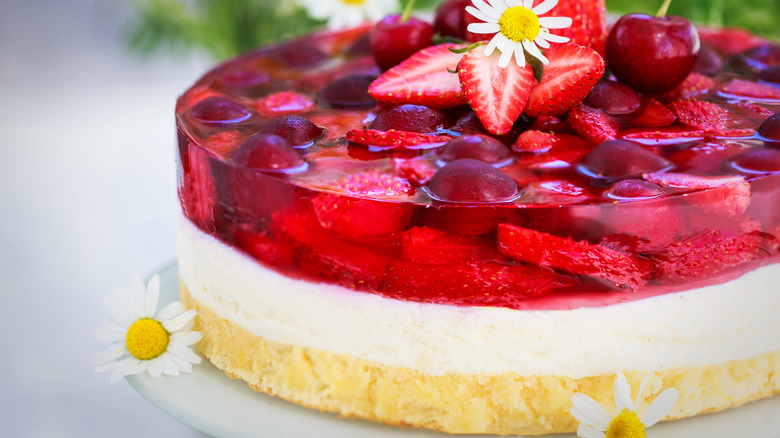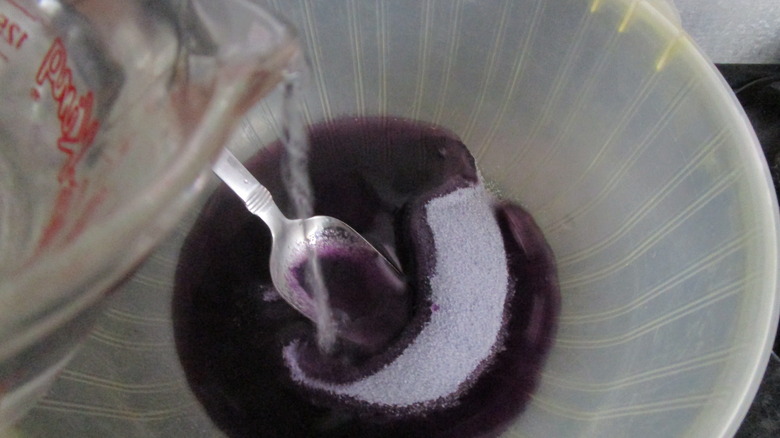Why Does Jell-O Need Hot And Cold Water?
Making Jell-O is simple enough, but the science junkie in me likes to understand how things work. I'm a sucker for learning about the way substances interact and why you have to prepare something a certain way in order to get the desired result. So, I was curious about Jell-O and how it gets its shape and movement, and I did some research regarding how the process involves a delicate balance of hot and cold water to create its fun texture.
Gelatin molecules are made up of long chains of proteins, tightly coiled when in their dry form. When you add hot water, the heat makes the coils relax, which allows them to spread evenly throughout the liquid. The hot water fully hydrates it, and you'll get a smooth, consistent mixture.
Cold water is then essential for setting the gelatin. After the hot water dissolves it, adding cold water brings the mixture to the right temperature for chilling. This step helps the gelatin molecules realign and form a network, which creates the firm, jiggly texture we associate with Jell-O. Skipping either step can result in an unsatisfactory final product, whether it's too runny or it doesn't set properly. And getting it out of the mold correctly is a whole other animal, so you can't afford to make smaller mistakes along the way that'll ruin the consistency before you even get to this part.
Does the ratio of hot to cold water affect Jell-O?
You'd be surprised to know that not only does the temperature matter, but the ratio of hot to cold water also factors in when determining the texture and firmness of your Jell-O. Most recipes call for equal parts of each, but adjusting the balance can help you achieve different results. From personal experience and trying to cater a baby shower, I know that you can't go too far in one direction unless you're being intentional and going for a softer or firmer mold. For example, using less cold water creates a firmer, more stable Jell-O, because reducing the amount of water increases the concentration of gelatin in the mixture, which leads to a stronger gel structure that works well for intricate molds or cutting into shapes. Conversely, reducing the amount of hot water can make it harder for the gelatin to dissolve fully, so it would be lumpy ... cottage cheese style.
Increasing the cold water slightly dilutes the gelatin concentration, giving you a softer, more delicate Jell-O texture. Why? Because gelatin forms a weaker base when less concentrated, so it's more flexible that way. This texture is ideal for desserts where a gentle, melt-in-your-mouth feel is preferred, like a light fruit-filled Jell-O or a soft pudding-like consistency. Adding more hot water doesn't have the same effect because the hot water is needed to fully dissolve the gelatin. If you add too much, it can weaken the gelatin's ability to set properly, and the Jell-O might not firm up at all. Cold water helps the gelatin cool and set correctly and still gives you the freedom to adjust the texture. In a nutshell, too much hot water disrupts the balance needed for the Jell-O to solidify.
All of the science-y stuff is kind of fun, especially when you start experimenting with Jell-O in different forms (like these 9 retro Jell-O recipes that will impress your guests) and you're trying to get it just right. That's why this info is actually helpful to know, though it still may be a good amount of trial and error to get your hot to cold water ratios correct when you start making fancy Jell-O desserts.

